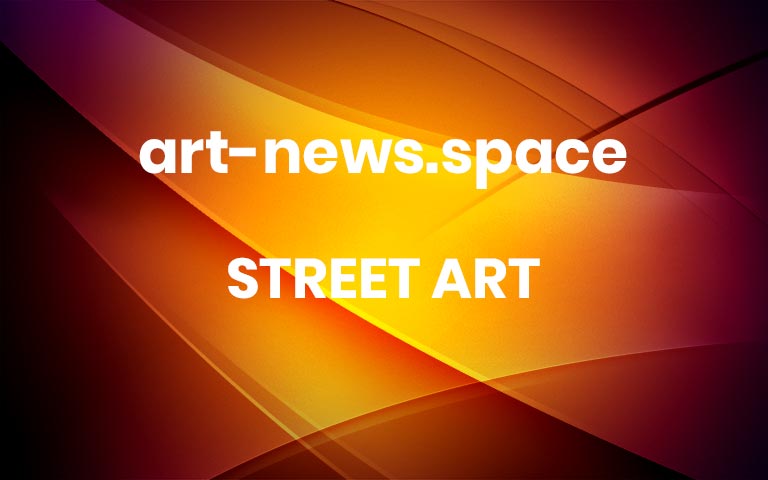Purple velvety body suits hang limply from the walls and ceiling, like regal, deflated aliens. You can see them through a human-sized hole cut into one of the four walls of the late artist Nicola L.’s La Chambre en fourrure (The Fur Room) (1969/2020). On the outside are arm and leg holes, so that, in a previous time, people could put their limbs through, activating these furry body suits and even reaching out to caress those who wandered inside.
“I wanted to oblige people to participate,” Nicola L. said of this body of work, which she called her pénétrables, back in the 1980s. Today, however, will not be obliged, or even allowed, to participate while it is installed at the Hammer Museum, as part of the Made in L.A. Biennial. Instead, we’ll have to imagine the kind of intimacy the installation was meant to invite, thanks to a global pandemic that has left it seeming more radically sensual than it possibly ever did.
The biennial, titled “a version” and installed across two museums, was supposed to open in June 2020, but instead privately debuted in November to just a smattering of press and VIPs. The institutions and the show’s curators, Lauren Mackler, Myriam Ben Salah, and Ikechukwu Casmir Onyewuenyi, opted to place only a few programs online and, now that it has opened to the public, that seems like a wise decision.
Rather than try to adjust and normalize what wasn’t normal, the show’s organizers left it largely unseen until viewers could experience it as it was meant to be. And there are, thankfully, more interesting aspects to dwell on than the pandemic’s effect, including the newly flexible connection some of the artist have to Los Angeles. The event has been plagued by boosterish, L.A.-centric language since its inception, in 2012, even as a biennial made just for L.A. began to seem needlessly provincial.
The artist Nicola L. moved to Los Angeles 18 months before her death, in 2019, and built her Fur Room while based between Paris and Ibiza. Other works in the show were made by artists not currently in L.A., like Ser Serpas, who is from Los Angeles but lives in Zurich. Unable to travel for the installation, Serpas instructed others in Los Angeles to scavenge the city for the curbside detritus that comprises two installations, one elegantly scrappy in the Hammer’s antiseptic first-floor gallery, and the other a symphony of discarded printers and domestic objects (dresser drawers, an upside-down ironing board) in a yard across the county at the Huntington.
Some artists are relatively new arrivals to the city; others are based here and elsewhere. (Even if previous editions also included artists with roots outside the city, the link to the local has tended to feel more blatant, such as through the 2014 focus on the L.A.’s alternative spaces). This loose relationship to residential status is welcome, given how much Los Angeles has changed as an art scene in the past decade. The increasingly international gallery scene has made other cities feel like worthier contenders for its formerly romanticized underdog status, and the skyrocketing cost of living has prompted artists who once chose the city for affordability to look elsewhere.
Made in L.A. 2020: a version. Installation view at The Huntington Library, Art Museum, and Botanical Gardens, San Marino. Photo: Joshua White / JWPictures.com.
But if the artists’ residential status no longer matters so much, place and site still do. The biennial is spread across two main locations—the Hammer’s Westwood building and the Huntington Library, Art Museum, and Botanical Gardens—both containing work by each of the show’s 30 artists. This format was proposed by the Huntington, located 25 minutes away in San Marino, as a way to “unite east and west,” according to its president, Karen Lawrence.
But it is notable that the “east” chosen here was San Marino, which has a lower minimum wage than Los Angeles and a median income that’s nearly six times higher, and not East Los Angeles, the unincorporated area east of downtown that has one of the highest population densities in the county and is 97 percent Hispanic.
In 2017, scholar and poet, Cecilia Caballero, described driving with her friend and son from their East L.A. home to see the Huntington’s exhibition of the Octavia Butler archive, and watching “the landscape shifting from a brown space to a white space as we traversed from freeway to freeway, through smog and sunlight.”
Installation view, Nicola L.’s La Chambre en fourrure (1969/2020). Photo: Joshua White / JWPictures.com.
When going anywhere becomes an exception to the rule, as it has this past year, accessibility becomes ever more crucial, and the Huntington is difficult to reach by public transportation, and admission is expensive ($25 to $29 for adults). In contrast, admission has been free at the Hammer since early 2014. (Visitors to Made in L.A. can receive a voucher for free admission to the Huntington portion of the show, but they must visit the Hammer first to receive these.)
Seeing both “versions” of the show is central to “a version’s” conceit. The exhibition plays with notions of doubling, mirroring, and continuation, with which co-curator Mackler has often experimented (at her alternative space Public Fiction, certain exhibitions would transform multiple times over their course).
Fulton LeRoy Washington, aka Mr. Wash, Mondaine’s Market (2005). Photo: Joshua White / JWPictures.com.
Sometimes, this works remarkably well. The Compton-based artist Fulton LeRoy Washington, aka Mr. Wash, couldn’t locate his 2005 painting Mondaine’s Market, when the biennial’s curators asked to include it. A portrait of a Kansas City grocery store, the painting includes two heads floating in the sky above—John L. Mondaine’s, the one-time owner of the store and a fellow inmate of Mr. Wash’s at the Florence Federal Correctional Institution in Colorado, and Mondaine’s grandson.
Mr. Wash, whose lifetime sentence for a drug offense was commuted by President Obama in 2016, spent months looking for the painting, which he had shipped to Mondaine’s family from prison, and then, after the curators asked repeatedly, agreed to paint a replica. Before the show opened, he found Mondaine, who had the painting above his couch and agreed to lend it. The original hangs at the Hammer, while the replica, nearly twice the size but otherwise similar, hangs at the Huntington.
Jacqueline Kiyomi Gork, the input of this machine is the power an output contains (2021). Photo: Joshua White / JWPictures.com.
Other successful doublings include Nicola L.’s work, her wall of wearable canvas bodies at the Huntington close enough to the Fur Room to recognize but so different in texture and resonance—the Huntington installation feels more like skin—that they invite a sensual experience all their own. Similarly, Jacqueline Kyomi Gork’s multi-room sound chamber on the Hammer’s balcony engulfs visitors in a slow experience, while her constantly inflating and deflating sculpture at the entrance to the Huntington installation is much more immediate.
In some cases, however, the pairings don’t as effectively weather the 25 miles between the two institutions, and the multiple days (or weeks) between visits. For instance, Mario Ayala’s vivid, multi-layered acrylic-on-canvas montages of Latinx material culture at the Hammer are complimented at the Huntington by his source material: a collection of 1980s and ’90s zines, including issues of the cult-status Teen Angels, laid out in a vitrine. All of this is great to see, but it is hard to conjure Ayala’s virtuosic renderings clearly enough in the mind’s eye to enjoy all the resonances between them and the ephemera.
Buck Ellison, Dick and Betsy, The Ritz-Carlton, Dallas, Texas, 1984 (2019). Photo: Joshua White / JWPictures.com.
In the end, the Huntington, which has been working in recent years to examine its own white, wealthy history and collection, benefitted most from this cross-venue venture, and the decision to allow interplay between some biennial works and the permanent collection led to a few memorable contrasts: Umar Rashid’s epic paintings (based on subversive narratives of the colonial era that Rashid develops across his work) framing a view into the American decorative arts galleries; Buck Ellison’s uncomfortably well-composed photographic indictments of American elitism (filled with lacrosse shorts, tennis balls, and well-appointed interiors) hanging alongside John Singleton Copley’s The Western Brothers (1758). Yet these destabilizations of the Huntington’s legacy still manage to give its collection pride of place.
Kahlil Joseph, BLKNWS® (2018–ongoing). Two-channel fugitive newscast. Courtesy of the artist. Installation view, Made in L.A. 2020: a version, Hilltop Coffee +Kitchen, Los Angeles. Photo: Jeff McLane.
Thankfully, two projects in the biennial ignore the restrictions and baggage of these institutions altogether—Larry Johnson’s pithy billboards installed citywide, like the sign on Rampart and Seventh that says “notary” and points down toward a notary’s office, and, more notably, Kahlil Joseph’s BLKNWS. The latter, produced in partnership with the non-profit Los Angeles Nomadic Division, has been screening across Los Angeles, primarily in Black-owned businesses in historically working-class neighborhoods, since November.
It appears on two screens mounted high in Naturaliart Jamaican Restaurant in West Adams, and on two screens mounted on the wall in Hank’s Mini Market in South Central. The footage riffs on news show formats, mixing new footage with found clips, celebrating Black culture while excavating its media representation and reveling in the possibilities of video collage. It has been available all over, to anyone. Perhaps in future iterations there will be still more of this kind of site-specific, community-focused placement, and ideally even less focus on what is “Made in L.A.” (if the biennial even keeps that title). How and where the art is placed, and who it is for, is far more compelling.
Follow Artnet News on Facebook: Want to stay ahead of the art world? Subscribe to our newsletter to get the breaking news, eye-opening interviews, and incisive critical takes that drive the conversation forward. More



